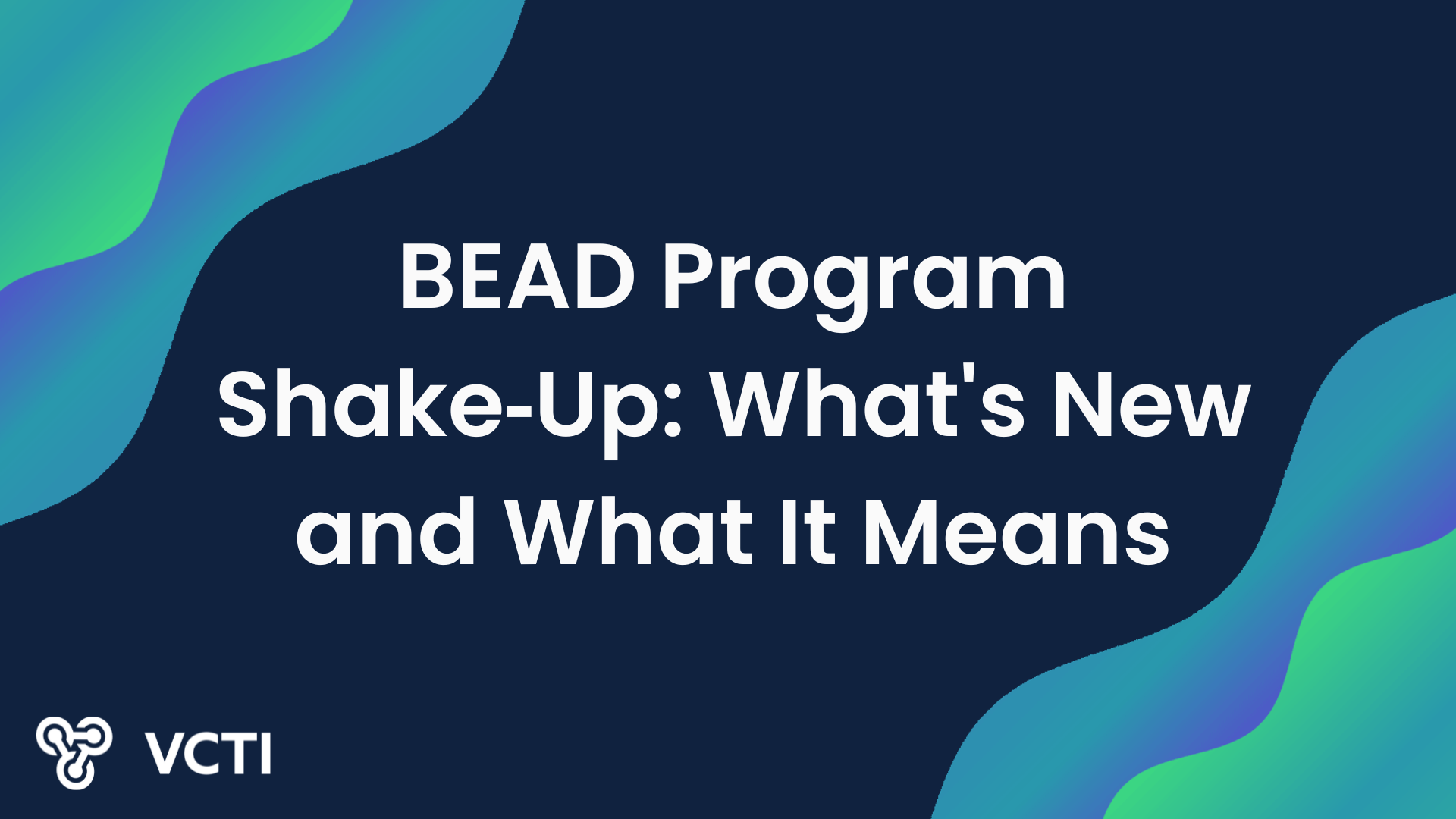BEAD Program Shake Up: What's New and What It Means

The Broadband Equity, Access, and Deployment (BEAD) program, launched in 2021 as part of the Infrastructure Investment and Jobs Act, allocated $42.5 billion to help bring high-speed internet (100 Mbps down, 20 Mbps up) to underserved and rural areas across the U.S. Until recently, its foundation rested on a “fiber-first” philosophy – prioritizing end-to-end fiber deployments wherever cost-effective, with satellite or wireless as fallback options.
On June 6, 2025, the National Telecommunications and Information Administration (NTIA) announced a major shift in the BEAD Program. Under the direction of Commerce Secretary Howard Lutnick, NTIA is now requiring states to prioritize the lowest-cost technologies for internet access. This abrupt change compels all participating jurisdictions to overhaul their subgrant plans within 90 days. What is changing and what does this mean to you?
The new NTIA Policy Notice also strips away several key requirements, including fair labor standards, climate considerations over network lifespans, consumer protections, and affordability measures for users of these taxpayer-funded networks.
States are now racing to comply with the new directives, with the first major deadline - revising their Initial BEAD Proposals - set for July 6, 2025.
What’s Changing?
- Leadership and "Tech-Neutrality" Push: Following the departure of BEAD director Evan Feinman in March 2025, Commerce Secretary Howard Lutnick has launched a "rigorous review" of the program. He’s criticizing previous mandates as regulatory overreach, and is advocating a “tech-neutral” model that gives equal footing to satellite and fixed wireless alongside fiber.
- Satellite and Unlicensed Fixed Wireless Gains, Fiber Takes a Hit: Under the proposed changes, states could channel funds to low-Earth orbit (LEO) satellite and unlicensed fixed wireless services. This is a leap from current practice of favoring FTTH deployment; until now, satellite was limited to locations where fiber wasn't feasible. States retain the ability to define future scalability requirements as part of the criteria for an award.
- Regulatory Rollback: New legislation and administrative changes would strip out labor, wage, DEI, and environmental conditions, restrict a state’s authority to mandate low-cost broadband options, and simplify compliance burdens (e.g., waiving letter of credit requirements for established providers)
NTIA has voided all previous BEAD award selections. States and territories must now run a new, open subgrantee selection round. All service providers, including those who didn’t participate before, are eligible to apply.
States have 90 days to revise their BEAD proposals, including new selection process and award criteria, and submit updated program to NTIA for approval.
Why This Shift Matters
- Variable Performance Experiences: With the mandate to now award the technology with the least cost, fiber-first projects aimed at universal coverage in states like West Virginia could now pivot to satellite or fixed wireless in marginal areas, resulting in disparities in speed and reliability, potentially within the same communities.
- Funding Allocation: The new mandate is expected to reduce the number of eligible locations as existing Unlicensed Fixed Wireless coverage is now considered if the service provider demonstrates that it is delivering the requisite speeds. As a result, states could see greater distances between eligible locations making the value of each dollar per site more significant.
- Market Shaking: Small and non-traditional service providers and existing fiber players that have won awards face uncertainty, not just in funding, but in rearchitecting existing plans, rebidding, regulatory compliance, and transition to new technologies.
How VCTI Helps Service Providers to Adapt
From pinpointing high-value markets to optimizing build and grant strategies with AI-driven insights, VCTI’s Broadband IQ empowers service providers to move faster, smarter, and more cost-effectively.
Broadband IQ’s “Where to Build” capabilities help service providers to quickly identify high-value opportunities, pinpointing target markets in hours, not weeks. By analyzing fiber coverage, competitors, demographics, housing density, and grant-eligible locations within and beyond a six-mile radius, VCTI reveals where to grow, and where to defend, market share.
Powered by AI, Broadband IQ's “How to Build” insights enable service providers to make faster, data-driven decisions with no field visits required. These capabilities deliver infrastructure mapping, and utility pole and terrain insights to guide construction planning, boosting capital efficiency by 20–30 percent.
As BEAD requirements shift, and deadlines contract, service providers face complexity in planning, compliance, and execution. VCTI’s solutions empower them with predictive modeling, automation, and deployment tools, enabling rapid adaptation, smarter bidding, and confident go-live execution plans, even amid regulatory flux.



